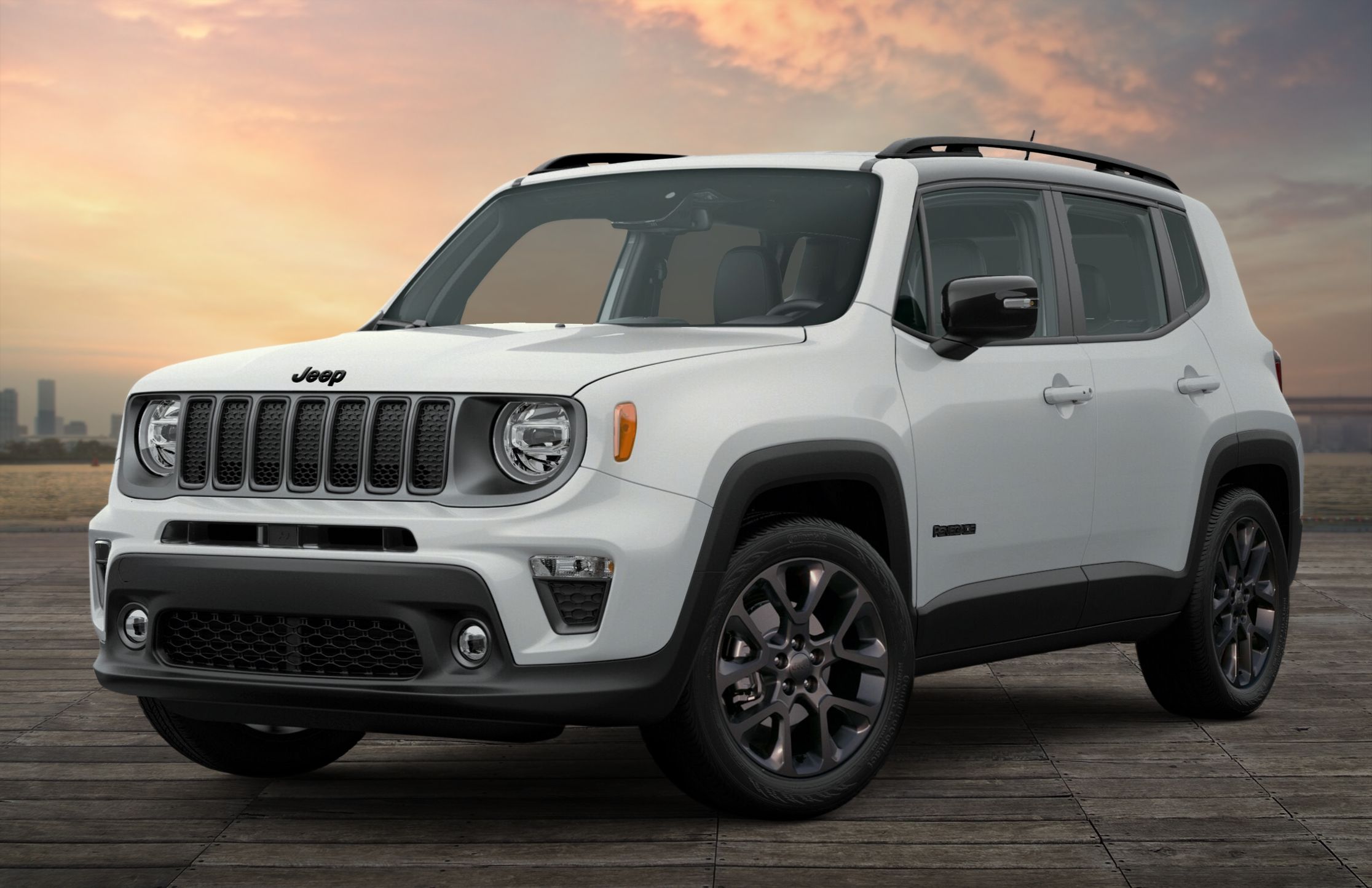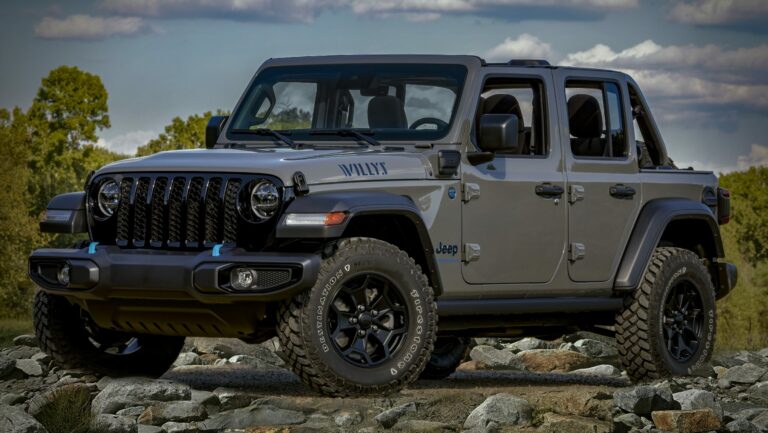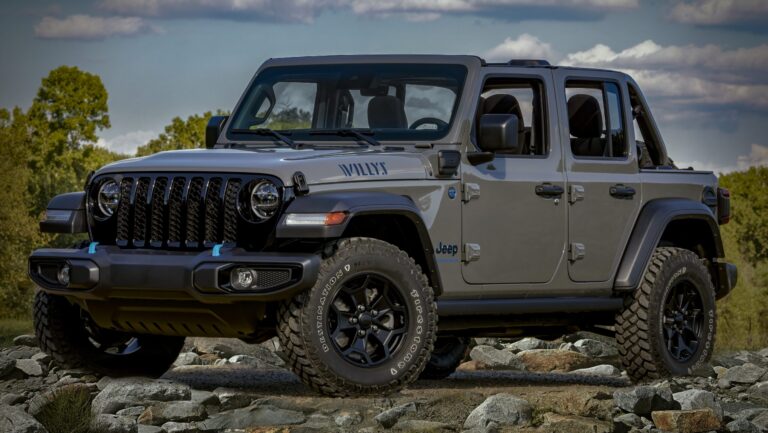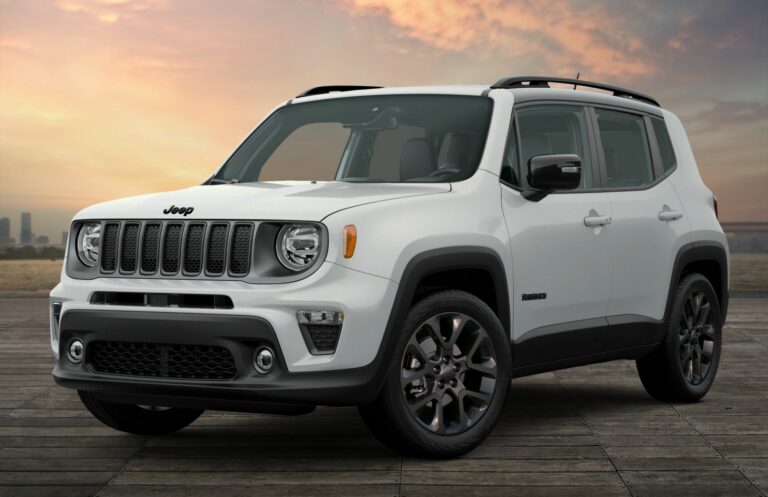Jeep 4.0 Stroker Motor For Sale: Unleash the Beast Within Your Rig
Jeep 4.0 Stroker Motor For Sale: Unleash the Beast Within Your Rig jeeps.truckstrend.com
For decades, the Jeep 4.0L inline-six engine (AMC 242) has been the heart and soul of countless Wranglers, Cherokees, and Grand Cherokees. Renowned for its legendary reliability and tractor-like torque, it’s a workhorse that has carried enthusiasts through trails, over mountains, and across continents. However, even legends can be improved upon. Enter the "stroker" motor – a popular and potent modification that significantly boosts the 4.0L’s displacement, translating into a dramatic increase in horsepower and, more importantly for Jeep owners, earth-moving torque.
If you’re a Jeep owner looking to transform your vehicle from capable to commanding, or if your existing 4.0L is showing its age, a Jeep 4.0 Stroker Motor For Sale might be the ultimate upgrade you’ve been searching for. This comprehensive guide will delve into what a stroker motor is, its benefits, what to look for when buying one, and essential considerations to ensure you make an informed purchase.
Jeep 4.0 Stroker Motor For Sale: Unleash the Beast Within Your Rig
What is a Jeep 4.0 Stroker Motor?
At its core, a Jeep 4.0 stroker motor is a highly modified version of the venerable 4.0L inline-six engine. The "stroker" designation refers to an increase in the engine’s stroke – the distance the piston travels within the cylinder from its lowest to highest point. This is typically achieved by installing a crankshaft with a longer throw, most commonly sourced from the older AMC 4.2L (258 cubic inch) engine, or an aftermarket stroker-specific crankshaft.
To accommodate this longer stroke, custom pistons with a relocated wrist pin (to maintain proper deck height and compression) are usually required, along with carefully selected connecting rods. The result is a substantial increase in engine displacement, often ranging from 4.5 liters (272 cubic inches) to 4.9 liters (299 cubic inches), or even more.
Common Stroker Displacements and Their Origins:
- 4.5L: Often achieved with a 4.2L crank and stock 4.0L rods, requiring custom pistons.
- 4.6L: A popular choice, typically using a 4.2L crank, longer aftermarket rods, and custom pistons.
- 4.7L: Another highly sought-after configuration, often built with a 4.2L crank, specific aftermarket rods, and custom pistons.
- 4.9L+: These often involve more extensive machining, custom crankshafts, and advanced component selection.

The primary goal of a stroker build is to maximize low-end and mid-range torque – precisely what a heavy Jeep needs for crawling over obstacles, pulling trailers, or simply merging onto a highway with authority.
Benefits of Owning a Jeep 4.0 Stroker Motor
Investing in a stroker motor offers a multitude of advantages that can dramatically improve your Jeep’s performance and driving experience:
- Significant Power and Torque Gains: This is the most obvious benefit. A well-built stroker can easily push horsepower figures into the 220-300+ range and torque numbers well over 300 lb-ft. This translates to effortless acceleration and immense pulling power.
- Improved Off-Road Performance: The increased low-end torque is a game-changer for off-roading. It allows you to maintain momentum over difficult terrain with less throttle input, reducing the need for high RPMs and making technical obstacles easier to navigate. Crawling is smoother, and steep ascents become less daunting.
- Enhanced Towing Capability: If you frequently tow trailers, boats, or other vehicles, a stroker motor will make a noticeable difference. It reduces strain on the engine, allows for higher gears to be held longer, and makes highway cruising with a load much more comfortable.
- Better Daily Driving Experience: Even for daily commuting, a stroker motor provides a more responsive and enjoyable ride. Less downshifting is required, highway speeds are maintained with ease, and the overall feeling is one of effortless power.
- Potentially Increased Longevity (If Built Correctly): When built by a reputable professional using quality components, a stroker motor can be as reliable, if not more so, than a stock 4.0L. The process involves replacing wear items, balancing rotating assemblies, and often upgrading weaker components.
- Retain Jeep Character: Unlike engine swaps (like a V8), a stroker maintains the inline-six configuration, preserving the original engine mounts, bellhousing bolt pattern, and overall character of the Jeep, simplifying the installation process compared to a full swap.
Key Components and Build Considerations
Understanding the components that go into a stroker build will help you evaluate potential purchases. A high-quality stroker motor involves more than just a different crankshaft.
- Crankshaft: Typically a reground 4.2L crank or a new aftermarket stroker crank.
- Connecting Rods: Can be stock 4.0L rods (with specific piston choice), or often upgraded aftermarket rods for strength and proper geometry.
- Pistons: Custom-designed forged or hypereutectic pistons are essential to achieve the desired compression ratio and accommodate the longer stroke without hitting the cylinder head.
- Cylinder Head: Often ported and polished for improved airflow, with upgraded valves and valve springs to handle the increased power and RPMs. Some builders may use aftermarket performance heads.
- Camshaft: A custom-ground camshaft specifically designed for a stroker application is crucial to maximize power and torque throughout the RPM range. It dictates the engine’s power band.
- Fueling System: Larger fuel injectors and potentially an upgraded fuel pump are necessary to supply enough fuel to the larger displacement engine.
- Engine Management/Tuning: This is perhaps the most critical component. The engine’s computer (ECU) must be re-tuned to optimize fuel delivery, ignition timing, and other parameters for the increased displacement and performance. Without proper tuning, a stroker will not run efficiently or reliably.
- Exhaust System: A free-flowing exhaust system (header, larger diameter piping, performance muffler) helps the engine breathe better and unleash its full potential.
- Cooling System: The increased power output generates more heat. An upgraded radiator, high-flow water pump, and improved fan clutch or electric fan setup are highly recommended to prevent overheating, especially under load.
- Drivetrain Compatibility: Be aware that the increased power and torque from a stroker can expose weaknesses in your existing drivetrain. Your transmission, transfer case, axles, and driveshafts may need upgrades to handle the additional stress, especially if you plan on aggressive off-roading or heavy towing.
Where to Find a Jeep 4.0 Stroker Motor For Sale
When searching for a stroker motor, your options will range from professional builders to private sellers.
- Specialized Engine Builders: This is generally the most recommended route. Companies specializing in Jeep performance and engine building offer professionally assembled, balanced, and often dyno-tested stroker motors. They typically provide warranties and build sheets detailing all components used. Examples include Golen Engine Service, ATK Engines, and other regional performance shops.
- Online Marketplaces & Forums: Websites like eBay, Facebook Marketplace, dedicated Jeep forums (e.g., JeepForum.com, NAXJA.org), and Craigslist sometimes have stroker motors for sale. Exercise extreme caution here. Verify the seller’s reputation, ask for extensive documentation, photos, and be wary of deals that seem too good to be true.
- Local Performance Shops: Check with reputable local automotive performance shops. Many have the expertise to build stroker motors or may know of customers selling a built engine.
- Salvage Yards/Used Parts: While you might find a stock 4.0L core here, it’s highly unlikely to find a built stroker motor. These are generally custom builds, not mass-produced.
Important Considerations When Buying a Stroker Motor
Purchasing a stroker motor is a significant investment. Due diligence is key to avoiding costly mistakes.
- Reputation of the Builder: This is paramount. A reputable builder will stand behind their work. Look for reviews, testimonials, and evidence of quality control.
- Documentation: Insist on a detailed build sheet that lists every component used (crank, rods, pistons, cam, head work, etc.), machining tolerances, and any dyno results. A warranty (even a limited one) is a huge plus.
- Mileage and Break-in: Ask about the motor’s history. Has it been properly broken in? How many miles are on it since the build?
- Components Used: Inquire about the brands and types of components. Are they budget-friendly or top-tier? Forged internals are generally preferred for higher horsepower applications.
- Compression Ratio: Know the compression ratio. Higher compression typically means more power but may require premium fuel (91+ octane) to prevent detonation.
- Compatibility with Your Jeep: While it’s a 4.0L block, ensure all sensor ports, mounting points, and accessory drive configurations are compatible with your specific year and model Jeep. Some earlier 4.0L blocks have different sensor locations than later ones.
- Included Ancillaries: Clarify what comes with the motor. Is it a long block (block, head, oil pan, valve cover) or a complete drop-in (including intake, exhaust manifold, sensors, throttle body, etc.)? Most "for sale" listings are for long blocks, meaning you’ll transfer many of your existing components.
- Tuning Solution: Ask if a specific tuning solution is recommended or included. Some builders offer bundled ECU tuning or recommendations for aftermarket ECUs. This is not optional.
- Shipping and Logistics: If buying from afar, factor in shipping costs, crating, and insurance. Engine freight can be expensive.
Installation and Post-Installation Tips
Once you’ve purchased your stroker motor, the journey isn’t over. Proper installation and post-installation care are crucial for longevity and performance.
- Professional Installation Recommended: Unless you are an experienced mechanic with specialized tools, it’s highly advisable to have a professional shop install your stroker motor. This ensures proper alignment, torque specs, and connection of all systems.
- Proper Break-in Procedure: Follow the builder’s recommended break-in procedure religiously. This typically involves specific oil changes, avoiding sustained high RPMs, and varying engine speeds for the first few hundred miles.
- Tuning is Critical: As mentioned, the engine must be properly tuned for the new displacement and camshaft. This optimizes performance, fuel economy, and reliability. This is not a "plug and play" swap.
- Upgrade Your Cooling System: Do not skip this. A stock cooling system will likely be insufficient for the increased heat generated by a stroker. Install a heavy-duty radiator, fan, and check your thermostat.
- Consider Drivetrain Upgrades: If your Jeep sees heavy use, consider upgrading your transmission, transfer case, and axle components to handle the added power and torque. This prevents costly failures down the road.
- Regular Maintenance: Adhere to a strict maintenance schedule, including regular oil changes with high-quality oil (often synthetic or a specific type recommended by the builder), checking fluid levels, and monitoring engine vitals.
- Monitor Gauges: Pay close attention to your oil pressure, water temperature, and voltage gauges, especially during the initial break-in period and under heavy load.
Jeep 4.0 Stroker Motor Price Guide (Estimated)
Please note that these prices are estimates only and can vary significantly based on the builder’s reputation, component quality (e.g., forged vs. hypereutectic pistons), included accessories, and current market conditions. Always get a detailed quote.
| Stroker Type / Build Level | Estimated Price Range (USD) | Key Inclusions & Features | Best For |
|---|
Jeep 4.0 Stroker Motor For Sale: Unleash the Beast Within Your Rig
For decades, the Jeep 4.0L inline-six engine (AMC 242) has been the heart and soul of countless Wranglers, Cherokees, and Grand Cherokees. Renowned for its legendary reliability and tractor-like torque, it’s a workhorse that has carried enthusiasts through trails, over mountains, and across continents. However, even legends can be improved upon. Enter the "stroker" motor – a popular and potent modification that significantly boosts the 4.0L’s displacement, translating into a dramatic increase in horsepower and, more importantly for Jeep owners, earth-moving torque.
If you’re a Jeep owner looking to transform your vehicle from capable to commanding, or if your existing 4.0L is showing its age, a Jeep 4.0 Stroker Motor For Sale might be the ultimate upgrade you’ve been searching for. This comprehensive guide will delve into what a stroker motor is, its benefits, what to look for when buying one, and essential considerations to ensure you make an informed purchase.
What is a Jeep 4.0 Stroker Motor?
At its core, a Jeep 4.0 stroker motor is a highly modified version of the venerable 4.0L inline-six engine. The "stroker" designation refers to an increase in the engine’s stroke – the distance the piston travels within the cylinder from its lowest to highest point. This is typically achieved by installing a crankshaft with a longer throw, most commonly sourced from the older AMC 4.2L (258 cubic inch) engine, or an aftermarket stroker-specific crankshaft.
To accommodate this longer stroke, custom pistons with a relocated wrist pin (to maintain proper deck height and compression) are usually required, along with carefully selected connecting rods. The result is a substantial increase in engine displacement, often ranging from 4.5 liters (272 cubic inches) to 4.9 liters (299 cubic inches), or even more.
The concept is relatively straightforward: a larger engine displacement means it can ingest and burn more air and fuel per combustion cycle, leading to more power and torque output. While the 4.0L is known for its torque, a stroker takes that characteristic to an entirely new level, making it even more capable for off-road challenges, heavy towing, or simply making your daily commute more exhilarating.
Common Stroker Displacements and Their Origins:
- 4.5L (272 CID): Often achieved with a 4.2L crank and stock 4.0L connecting rods (5.875" length), requiring custom pistons to correct for rod length and stroke. This is a common entry-level stroker.
- 4.6L (279 CID): A very popular choice, typically using a 4.2L crank, slightly longer aftermarket connecting rods (6.125" length), and custom pistons. This combination often provides an excellent balance of power and reliability.
- 4.7L (287 CID): Another highly sought-after configuration, built with a 4.2L crank, specific aftermarket rods (often 6.000" length), and custom pistons. This yields a significant power bump.
- 4.9L+ (299 CID+): These often involve more extensive machining, custom crankshafts, and advanced component selection, pushing the boundaries of the 4.0L block. They are typically for dedicated performance builds.
The primary goal of a stroker build is to maximize low-end and mid-range torque – precisely what a heavy Jeep needs for crawling over obstacles, pulling trailers, or simply merging onto a highway with authority.
Benefits of Owning a Jeep 4.0 Stroker Motor
Investing in a stroker motor offers a multitude of advantages that can dramatically improve your Jeep’s performance and driving experience:
- Significant Power and Torque Gains: This is the most obvious benefit. A well-built stroker can easily push horsepower figures into the 220-300+ range and torque numbers well over 300 lb-ft. This translates to effortless acceleration and immense pulling power, far exceeding the stock 4.0L’s 190 HP and 225 lb-ft.
- Improved Off-Road Performance: The increased low-end torque is a game-changer for off-roading. It allows you to maintain momentum over difficult terrain with less throttle input, reducing the need for high RPMs and making technical obstacles easier to navigate. Crawling is smoother, and steep ascents become less daunting, providing better control and reducing drivetrain shock.
- Enhanced Towing Capability: If you frequently tow trailers, boats, or other vehicles, a stroker motor will make a noticeable difference. It reduces strain on the engine, allows for higher gears to be held longer (less downshifting), and makes highway cruising with a load much more comfortable and safer.
- Better Daily Driving Experience: Even for daily commuting, a stroker motor provides a more responsive and enjoyable ride. Less downshifting is required, highway speeds are maintained with ease, and the overall feeling is one of effortless power, making your Jeep feel much lighter and more agile.
- Potentially Increased Longevity (If Built Correctly): When built by a reputable professional using quality components, a stroker motor can be as reliable, if not more so, than a stock 4.0L. The process involves replacing wear items, balancing rotating assemblies, and often upgrading weaker components like cylinder heads or camshafts, which can lead to a more robust and durable engine.
- Retain Jeep Character & Simplicity: Unlike engine swaps (like a V8 or LS), a stroker maintains the inline-six configuration, preserving the original engine mounts, bellhousing




